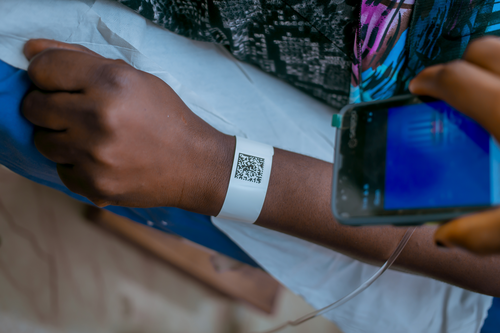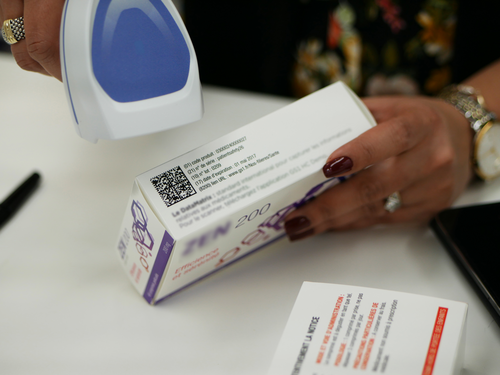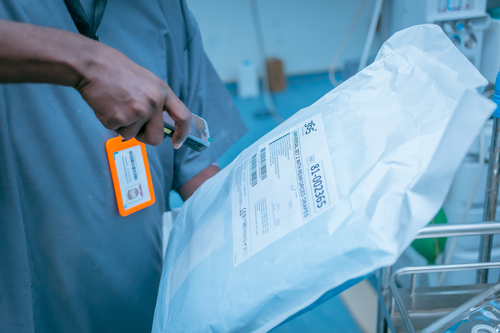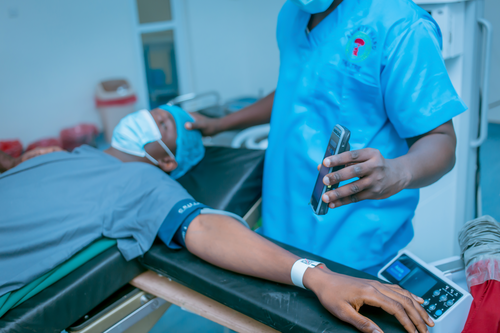Improve patient safety and care
Strengthen supply chain efficiency
Prevent counterfeit, falsified and substandard products
Comply with local and global healthcare regulations
We can't find the internet
Attempting to reconnect
At GS1 Kenya, we champion the adoption of internationally recognized GS1 standards to transform healthcare delivery, enhance patient safety, and strengthen supply chain integrity. As healthcare systems face increasing complexity, counterfeit threats, and regulatory demands, GS1 standards provide the foundation for visibility, traceability, and interoperability.
Global standards for automatic identification provide an opportunity to make the healthcare supply chain safer as well as more efficient and accurate. Healthcare regulators and trading partners have realized that a global standardized identification system from manufacturer to patient treatment is imperative to comply with the increasing need for product traceability around the world.
GS1 standards enable unique identification, real-time tracking, and seamless data sharing for products, people, and places across the healthcare ecosystem. This empowers hospitals, regulators, pharmaceutical companies, and medical device manufacturers to:
Improve patient safety and care
Strengthen supply chain efficiency
Prevent counterfeit, falsified and substandard products
Comply with local and global healthcare regulations

Pharmaceutical and medical device identification & marking can have very specific needs, including:

Encoding large amounts of variable or dynamic data (batch/lot number, expiry date, serial number, etc.) at high production speeds
Direct part marking (e.g. marking on surgical instruments, etc.)
Global legal and regulatory requirements that may dictate the placement of, and data encoded in a bar code symbol as well as the specific data carrier (bar code symbology) to be used
Traceability requirements for both pharmaceuticals and medical devices
GS1 Data Matrix is the preferred two-dimensional (2D) matrix bar code symbology that efficiently meets all of the needs of the pharmaceutical and medical device industry.
Contains much more information than a classic linear bar code symbol such as the GTIN (Global Trade Item Number), lot number, expiry date and even a unique serial number, which allows better traceability.
2D matrix bar code symbols capture the largest amount of data in by far the smallest footprint.
Symbols can be printed directly on the products themselves, providing serial numbers that track them throughout their entire lifetime.
Has a sophisticated error correction algorithm that can compensate for lost or missing data due to extraneous marks or partial symbol damage.

Right products for the right patients when needed. Product traceability from the point of manufacture to the point of care. GS1 Global Trade Item Numbers (GTINs) are used to uniquely identify, track and trace products and devices.

Enabling transparency in patient care. GS1 standards uniquely identify patients and staff for greater traceability throughout care journeys. The GS1 Global Service Relation Number (GSRN) enables automatic identification at point of care.

Right place, right time. GS1 Global Location Numbers (GLNs) improve supply chain efficiency and patient safety by uniquely identifying organizations, departments, wards, or even specific shelves and patient bays.
GS1 Kenya offers customized training programs for healthcare professionals, pharmacists, ICT providers, and regulators on GS1 standards, traceability, and supply chain optimization.
Join GS1 Kenya to access:
Collaborate on pilot programs, research, and national projects to build a more resilient healthcare ecosystem in Kenya.
Join the movement towards safer, more efficient healthcare delivery through global standards implementation.